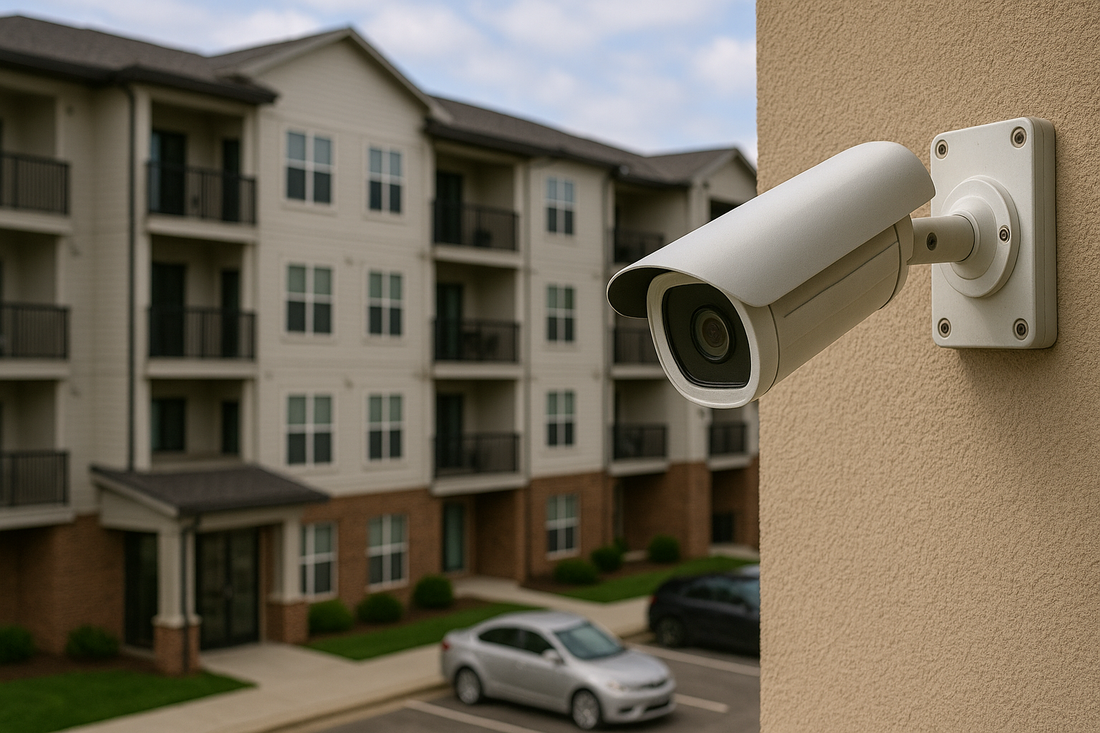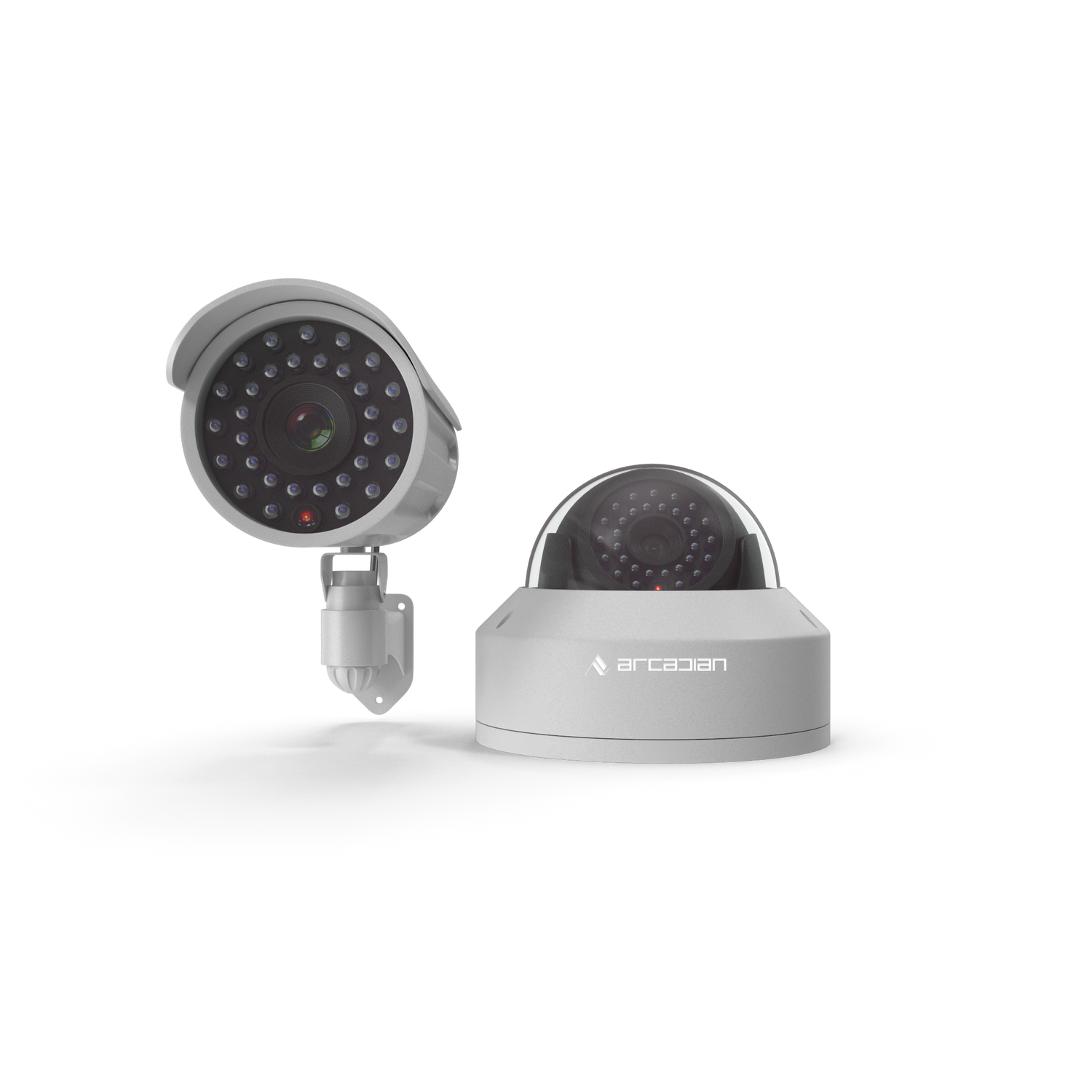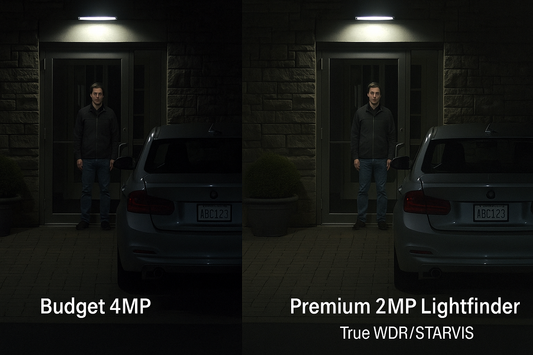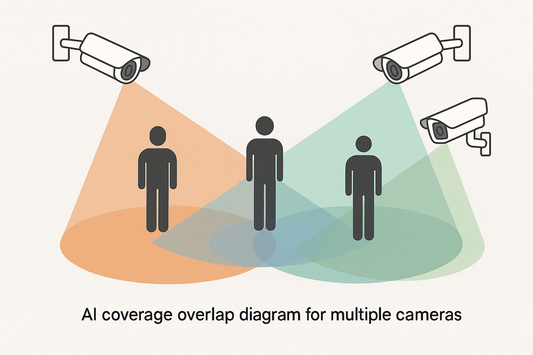Top Security Vulnerabilities Facing Property Managers in 2025 — And How to Mitigate Them
From unauthorized access to false alarms, property managers face growing security risks in 2025. Learn how AI-powered video analytics from ArcadianAI can protect your buildings, residents, and reputation.

Introduction
In 2025, property management isn’t just about maintenance and rent collection — it’s about risk mitigation, liability control, and resident trust. Across North America, property managers are under pressure from insurance providers, residents, and ownership groups to prove that their security operations are modern, compliant, and proactive.
According to a 2024 Building Security Index by IFMA, over 63% of property managers reported at least one serious security incident in the past 12 months — most often involving unauthorized access, tailgating, or vandalism. Meanwhile, traditional CCTV and guard patrols are proving insufficient in a world of hybrid threats and 24/7 liability exposure.
Enter ArcadianAI’s Ranger — the world’s first cloud-native, camera-agnostic AI platform that transforms passive cameras into real-time digital guards. Unlike static video systems or legacy NVRs from companies like Verkada, Genetec, or Eagle Eye Networks, Ranger delivers continuous situational awareness, detecting patterns like tailgating, loitering, and trespassing in seconds.
Quick Summary / Key Takeaways
-
Unauthorized access remains the #1 risk for property managers.
-
False alarms and poor video review workflows drain operational budgets.
-
Tailgating, vandalism, and perimeter breaches are rising in mixed-use buildings.
-
Liability exposure is now driving insurance costs up 20–30% in some regions.
-
ArcadianAI’s Ranger offers scalable, AI-driven protection that lowers both cost and risk.
Background & Relevance
Security expectations have shifted. With hybrid work, e-commerce deliveries, and shared amenities, buildings experience more transient traffic than ever before. Each open door or unverified visitor becomes a liability.
A 2024 JLL survey found that 77% of property managers now consider “technology-driven access control and video analytics” a top-three investment priority. Yet many still rely on outdated NVRs or guard companies that lack digital oversight.
The question is no longer if property managers will modernize, but how quickly they can afford not to.
Core Topic Exploration
1. Unauthorized Access & Access Control Failures
Problem:
Old access systems, shared key fobs, and unsecured entry points lead to unauthorized entries — from former tenants, contractors, or opportunistic intruders.
Real-World Example:
In Toronto, a 2024 case involved an ex-employee entering a mixed-use complex using an old keycard, causing $80,000 in damages before being discovered on camera days later.
Mitigation:
-
Implement integrated access + video correlation (e.g., Ranger + access logs).
-
Use AI person re-identification to detect repeat offenders across multiple cameras.
-
Automate real-time entry alerts for off-hours movement.
ArcadianAI’s Advantage:
Ranger flags suspicious re-entry events and correlates faces, motion, and access events — providing instant visual verification to property staff and security teams.
2. Tailgating and Piggybacking Incidents
Problem:
Tailgating occurs when unauthorized individuals follow authorized users into secured areas — a major liability in residential and corporate facilities.
Example:
A 2025 security report by Allied Universal found that tailgating causes over 45% of building breaches in North America.
Mitigation:
-
Deploy AI analytics that count and verify entries vs. exits.
-
Use smart door cameras to detect two-person entries on one credential swipe.
-
Educate tenants about the importance of controlled access.
ArcadianAI’s Advantage:
Ranger’s multi-camera AI model identifies tailgating across entrances, even when people appear from blind angles — triggering contextual alerts, not noise.
3. Perimeter Intrusion and Vandalism
Problem:
Parking lots, garages, and exterior perimeters remain the weakest link in many buildings. Traditional motion detection causes floods of false alarms.
Example:
In Los Angeles, one property management firm reported 200+ false alarms per month due to shadows, animals, or lighting changes — overwhelming guards and leading to real intrusions being missed.
Mitigation:
-
Use scene-aware AI models that distinguish between vehicles, humans, and animals.
-
Add virtual perimeters (geofences) with smart filters for non-threatening motion.
-
Integrate alerts with mobile security apps for on-site verification.
ArcadianAI’s Advantage:
Ranger uses adaptive video intelligence that learns environmental patterns, reducing false alarms by up to 65%, while still catching true threats.
4. Alarm Fatigue and Slow Incident Response
Problem:
Traditional systems overwhelm operators with redundant alerts, leading to alarm fatigue — one of the biggest drivers of missed events and liability.
Example:
A property management group in Chicago admitted that 80% of their alarms were ignored by night staff due to excessive false positives.
Mitigation:
-
Centralize monitoring in a cloud-based dashboard.
-
Prioritize alarms by severity and confidence.
-
Automate first-response verification using AI summaries and clip review.
ArcadianAI’s Advantage:
Ranger’s “Observer + Alerter” AI pair automatically filters out noise, delivering only high-confidence, context-rich alerts — complete with event summaries and timestamps.
5. Cyber-to-Physical Threats
Problem:
In 2025, the line between IT and physical security has blurred. A compromised IP camera can now serve as an attack vector for ransomware or data breaches.
Example:
The CISA 2024 Threat Bulletin warned that over 100,000 cloud-connected cameras still use default passwords.
Mitigation:
-
Use NDAA-compliant, encrypted hardware.
-
Regularly patch firmware and restrict network ports.
-
Centralize video access via secure, cloud-native VSaaS platforms like ArcadianAI.
ArcadianAI’s Advantage:
Ranger operates on zero-trust architecture, encrypting all video streams and integrating multi-layer access control — ensuring security from lens to cloud.
Comparisons & Use Cases
Competitor Comparison: ArcadianAI vs. Legacy Players
| Feature | Verkada | Eagle Eye Networks | Genetec | Typical Guard Service | ArcadianAI Ranger |
|---|---|---|---|---|---|
| Tailgating Detection | Partial | No | No | Manual observation | ✅ Automated multi-camera AI |
| Camera Agnostic | No | Yes | Yes | N/A | ✅ 100% camera-agnostic |
| False Alarm Reduction | Moderate | Moderate | Limited | None | ✅ 65%+ reduction |
| Cloud Architecture | Proprietary | Hybrid | On-premise heavy | N/A | ✅ Fully cloud-native |
| AI Contextual Awareness | Partial | No | Limited | Low | ✅ Scene-aware, multi-sensor intelligence |
| ROI Timeline | 12–18 months | 12+ months | 18 months | Ongoing labor | ✅ <3 months average |
Real-World Use Case:
A 300-unit apartment complex in Vancouver cut guard hours by 40%, reduced false alarms by 68%, and improved incident response time by 70% after deploying Ranger across existing cameras.
Common Questions (FAQ)
Q1: How can property managers reduce security costs without increasing risk?
By adopting cloud-native AI systems like Ranger that automate monitoring and verification, you cut guard dependency while improving response accuracy.
Q2: Can Ranger integrate with existing cameras or access systems?
Yes. Ranger is camera-agnostic and connects with most major VMS or access control APIs (e.g., HID, Brivo, Genetec).
Q3: What about privacy compliance?
ArcadianAI fully supports NDAA and GDPR compliance, anonymization, and secure audit trails for every event.
Q4: Is AI surveillance complicated to manage?
Not with Ranger. It’s designed for property management simplicity — automated alerts, cloud dashboards, and mobile access.
Q5: How does ArcadianAI differ from guard companies?
Ranger doesn’t replace guards — it augments them, making every site smarter, faster, and safer 24/7.
Conclusion & Call to Action
In 2025, property management success depends on trust — and trust depends on visible, verifiable security. The age of static cameras and manual patrols is over. Whether you manage one building or a national portfolio, the future of safety is adaptive, intelligent, and cloud-driven.
ArcadianAI’s Ranger turns your existing infrastructure into a proactive AI guardian — protecting your residents, your reputation, and your bottom line.
👉 See ArcadianAI in Action → Get Demo – ArcadianAI
Security Glossary (2025 Edition)
Access Control — A system regulating who can enter or exit a facility using credentials such as keycards or biometrics.
AI Video Analytics — Machine-learning algorithms that analyze video feeds to detect motion, objects, or anomalies.
Alarm Fatigue — The desensitization of operators due to excessive false alarms, leading to missed true events.
ArcadianAI Ranger — A cloud-native, camera-agnostic AI platform that transforms CCTV systems into adaptive virtual guards.
Cloud-Native Architecture — A software design that leverages scalable cloud computing for flexibility and redundancy.
False Alarm — A non-threatening event mistakenly flagged as a security breach.
Forensic Review — The post-incident analysis of video and event data to determine cause and responsibility.
Liability Exposure — The potential financial or legal responsibility for harm occurring on managed property.
NDAA Compliance — U.S. federal security standard banning certain non-compliant surveillance equipment.
Perimeter Intrusion Detection — Systems that identify breaches around the outer boundary of a secured property.
Piggybacking — When an unauthorized individual enters a secure area by closely following an authorized person.
Resident Safety — Measures that protect tenants and guests from harm or unauthorized intrusion.
Scalable Security — Solutions that expand effortlessly across multiple sites or properties.
Tailgating — Unauthorized entry through a controlled door immediately after an authorized person.
Tenant Trust — The confidence residents place in property management to ensure safety and security.
Unauthorized Access — Entry into a secured space without permission or valid credentials.
VSaaS (Video Surveillance as a Service) — Cloud-based video monitoring and storage managed remotely.
VMS (Video Management System) — Software that controls, records, and manages video feeds.
Zero-Trust Security — A model requiring verification for every user and device, regardless of location or network.

Security is like insurance—until you need it, you don’t think about it.
But when something goes wrong? Break-ins, theft, liability claims—suddenly, it’s all you think about.
ArcadianAI upgrades your security to the AI era—no new hardware, no sky-high costs, just smart protection that works.
→ Stop security incidents before they happen
→ Cut security costs without cutting corners
→ Run your business without the worry
Because the best security isn’t reactive—it’s proactive.







